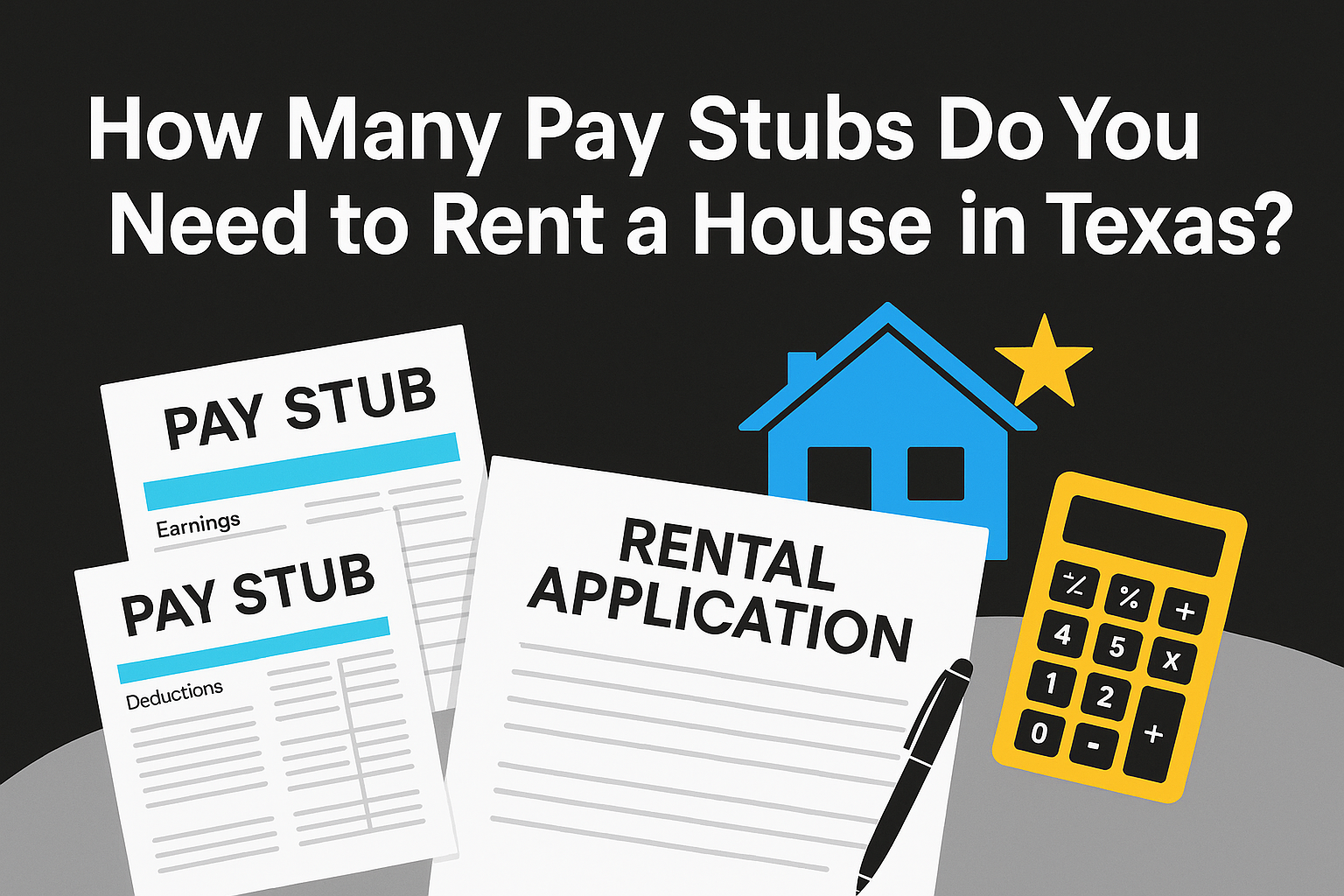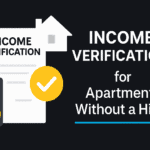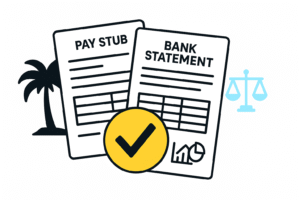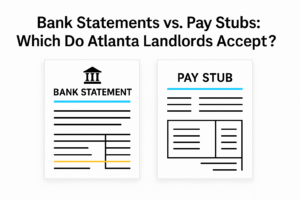Last updated: September 2025. Renting a house comes with real scrutiny, and income verification sits at the center. In Texas and across the US, UK and Canada, pay stubs (or payslips) remain the primary evidence of earnings used by property managers and screening services. This guide clarifies requirements, explains How Many Pay Stubs Do You Need to Rent a House in Texas, and outlines what counts as compliant editing so you can submit a strong application without risking fraud.
At FinancialDocsProvider.com, we specialise in formatting, organising and reconciling pay stubs, bank statements and tax documents. We never fabricate numbers or alter material facts; our role is to present your existing records clearly and consistently. Whether you’re a W‑2 employee, self‑employed or managing multiple income streams, our packaging makes your financial proof easy to review and ready for due diligence by landlords and lenders.
Related Entities & Terms
- Pay stubs / payslips
- W‑2 forms, 1099 forms, T4 slips, Notice of Assessment (NOA)
- Bank statements, proof of income statements
- Three‑times‑the‑rent rule
- Consumer Financial Protection Bureau (CFPB) & Federal Trade Commission (FTC)
- Internal Revenue Service (IRS) & Social Security Administration (SSA)
- Financial Conduct Authority (FCA) & HM Revenue & Customs (HMRC)
- Financial Consumer Agency of Canada (FCAC) & Canada Revenue Agency (CRA)
- Fraud prevention & document authentication
- Portable Tenant Screening Reports (PTSRs)
What are the legal basics for pay stubs in rent applications?
Landlords require evidence, not just assurances. While few jurisdictions set a fixed number by statute, the market follows clear norms for volume and recency. In Texas and the broader US, most property managers expect about two months of consecutive stubs—roughly eight weekly, four to five bi‑weekly or two semi‑monthly statements. Many also apply the “three‑times‑the‑rent rule,” which asks that your gross monthly income be at least triple the rent. Expect those expectations to anchor how many documents you provide and how they’re reviewed.
Across the Atlantic, UK applicants for Housing Benefit must supply original documents, which typically means five recent weekly payslips or two monthly ones. In Canada, landlords usually ask for two or more current pay stubs and may request a CRA Notice of Assessment or a Proof of Income Statement for self‑employed applicants. These are industry standards rather than statutory quotas, but they are reinforced by regulators’ expectations around fairness, accuracy and privacy.
Providing multiple stubs signals consistency, tenure and financial responsibility. US landlords must disclose screening criteria and safeguard applicant data, and Texas Property Code §92.3515 reflects that disclosure expectation. The CFPB, FCA and FCAC emphasise fair treatment and transparency in tenant screening. If you’re using a Portable Tenant Screening Report (PTSR), confirm whether pay stubs still need to be uploaded separately as “supporting artifacts,” since many portals treat them that way.

It bears repeating: fraudulent misrepresentation is illegal. Altering amounts, dates or identities crosses the line into fraud under US, UK and Canadian law. The FTC has taken action against vendors that sell fake documents, and leases often allow termination for material misstatements. Format for clarity, but keep the facts intact.
Which edits are allowed for pay stubs and financial documents?
Editing is not inherently unlawful; intent and substance matter. You may improve readability, redact sensitive identifiers and consolidate pages into a single, orderly file. Redaction of Social Security, National Insurance or SIN numbers is not only lawful but a smart privacy control. Converting images to searchable PDFs and arranging stubs chronologically also improves verification without touching the underlying data.
Our team specialises in compliant edits. We can:
- Redact sensitive data: Mask SSNs/SINs, account numbers and employee IDs while leaving employer name, pay period and amounts visible for verification.
- Improve legibility: Correct skewed scans, enhance contrast and standardise fonts so line items are clear. Clean presentation accelerates underwriting and screening.
- Reconcile and organise: Collate pay stubs with W‑2s, T4s, NOAs or 1099s in logical order, and add cover sheets that label each document and period.
- Format for digital submission: Convert to searchable PDFs, set consistent page sizes, compress responsibly and merge related documents into one upload‑ready file.
These edits do not change the truth; they showcase it. The CFPB, FCA and FCAC all encourage accurate recordkeeping and prudent privacy practices. If you are submitting through a portal, validate that dates, pay periods and employer names are legible on mobile and desktop. A clean, coherent package shortens review cycles and reduces back‑and‑forth.
Operational tip: Name files consistently (e.g., 2025‑05‑Payroll‑Stub‑2of4.pdf). Use 300 dpi for scans, and ensure the first page summarises the package contents so reviewers can triage quickly. Keep an audit trail of what was redacted and why, in case a landlord or lender requests clarification later.
What types of edits are illegal?
Any change that alters substance is off‑limits. This includes changing gross or net pay, manipulating pay periods, inventing employers or removing deductions to inflate take‑home pay. Those actions are fraudulent and can trigger eviction, civil liability and criminal exposure. US regulators have pursued sellers of fake pay stubs, and similar prohibitions exist in the UK and Canada.
In Canada, provincial rules prohibit false statements on rental applications. SingleKey’s screening guide flags forged stubs and encourages requesting two to three consecutive payslips and cross‑checking them with bank statements. Discrepancies, unusual fonts and “round” numbers are classic red flags. UK landlords can terminate tenancies and pursue prosecution under the Fraud Act 2006 when payslips are falsified.
Here are activities to avoid:
- Altering pay amounts, dates or employer information: Even “minor corrections” are treated as material misstatements.
- Creating fake stubs: Generating payslips when no employment exists is forgery, not formatting.
- Editing bank statements to hide overdrafts or inflate balances: Tampering extends to bank data and is equally unlawful.
- Providing someone else’s documents as your own: Substituting another person’s payslips constitutes identity fraud.
If you’re uncertain, escalate early. Ask the landlord or a qualified advisor before making changes. Compliance is not a “nice to have”—it protects your tenancy prospects and your legal risk posture.
When do you need professional document formatting?
Many applicants can self‑submit, but complexity increases the risk of delays. In Texas’s competitive market, property managers often request comprehensive proof packages that blend stubs, bank statements and employer letters. Professional formatting reduces friction, accelerates review and ensures the narrative of your income is obvious at a glance.
Here are common situations where professional help is invaluable:
- Renting high‑value properties: Luxury or single‑family homes may require three months of stubs and additional supporting proof. Presentation signals seriousness.
- Self‑employment or multiple income streams: Freelancers and gig workers often have variable deposits. Canadian guides recommend tax returns, T1 General forms, NOAs and bank statements to demonstrate consistency.
- Recent job changes: If you have limited stubs from a new role, supplement with an offer or employment letter. Cohesive packaging prevents avoidable follow‑ups.
- Joint applications and co‑signers: Combine stubs in one chronological file and clearly label whose documents appear where. Include co‑signer context on a cover sheet.
- Loans and credit applications: Lenders may request stubs, bank statements, tax returns and payroll reports. Formatting rules are similar to rental screening.
- International or multi‑currency income: If part of your earnings is in a different currency, add a simple conversion table and note the source rate. Keep original figures unchanged and clearly labeled.
- Commission, overtime or tips: Where income fluctuates, include a brief summary page highlighting averages and explaining seasonality, without changing any amounts.
- Contracting via payroll platforms: If you are paid through staffing or gig apps, include platform statements with dates aligned to bank deposits for cross‑validation.
Consider a self‑employed graphic designer relocating to Dallas. She invoices in USD and CAD, receives PayPal deposits and recently moved from Toronto. The landlord asks for three months of stubs, bank statements and a CRA NOA. Alone, stitching those records into a story is time‑consuming. With structured formatting and a one‑page summary, she submits a coherent PDF that aligns deposits to invoices and tax records, boosting confidence without altering facts.
How do we work?
Our process is transparent and compliance‑first. We operate as editors and organisers, not as creators of data. We only work with your authentic documents and maintain a clear audit trail of edits that improve readability, privacy and order—never the numbers themselves.
- Intake & consultation: Complete our secure intake and share what you need formatted, your pay cadence, currencies and any deadlines. For complex cases—self‑employment, multi‑currency, variable pay—we advise on the best supporting evidence to include so reviewers have everything in one pass.
- Document reconciliation: We check that pay periods, amounts and bank deposits align across stubs, W‑2s, 1099s, T4s, NOAs and statements. If something is missing or inconsistent, we flag it and request additional proof. We do not change facts; we ensure the chronology and totals make sense together.
- Formatting & redaction: We clean scans, fix rotation, unify typography and merge pages. We redact personal identifiers while keeping all material details visible. Where useful, we add a cover sheet summarising contents and indicating relevant regulators for jurisdictional context.
- Delivery & aftercare: We deliver a password‑protected PDF via secure transfer, sized for portal uploads. If a landlord requests updates—such as merging extra stubs or adding an employment letter—we deliver prompt revisions. Pricing is transparent—see our proof of income editing and pricing pages for details.
Throughout, we adhere to applicable privacy laws and handle data with least‑privilege access. We support clients from Texas to London to Toronto and tailor each package to local expectations and digital submission workflows. For questions, contact our team or learn more about our process.
Compliance checklist & document packaging tips
Use this checklist to operationalise your application. Following these steps increases approval odds, reduces review time and protects you from accusations of misrepresentation.
- Gather the right number of pay stubs: In Texas and most U.S. jurisdictions, compile at least two months of consecutive stubs—eight weekly, four to five bi‑weekly or two semi‑monthly. In the UK, prepare five weekly or two monthly payslips. In Canada, provide at least two recent pay stubs.
- Include supporting documents: Have your W‑2, T4, 1099 or NOA ready. For self‑employed income, provide tax returns (two years is typical), bank statements covering three to six months and invoices or contracts.
- Verify consistency: Match each stub against bank deposits. Dates, employer names and net amounts should align. Any gap should be explained in writing.
- Redact sensitive details: Mask SSNs, NI numbers or SINs, but keep employer, pay periods and amounts visible.
- Organise in order: Arrange documents chronologically. Label files clearly (e.g., “May 2025 – Pay stub 1 of 4”). Add a cover sheet that outlines contents and the purpose of each document.
- Check file quality: Use high‑resolution, searchable PDFs. Ensure text is legible, pages are upright and no edge is cropped. Merge related pages into one file.
- Explain anomalies: Provide short notes for overtime spikes, bonuses, leave periods or variable tips. Include an employer or accountant letter when appropriate.
- Use secure delivery: Send via encrypted email attachments or secure portals. Avoid public Wi‑Fi during upload and disable link sharing after submission.
- Calculate your rent‑to‑income ratio: If your gross income is close to the threshold, include a simple calculation on the cover sheet to reduce questions.
- Align names and addresses: Ensure your name and address are consistent across stubs, bank statements and the application form.
- Mind recency: “Recent” usually means stubs from the past 30–60 days. Replace older stubs if a review is delayed.
- Keep originals handy: Some landlords verify directly with employers. Be ready to provide contact details for HR or payroll.
Common mistakes that trigger rejections
Even diligent applicants can get tripped up by preventable issues. Avoid the pitfalls below to maintain momentum and credibility throughout screening.
- Providing too few stubs: Supplying one payslip when the request is for two to three consecutive ones suggests incomplete history.
- Inconsistent numbers: Round figures or amounts that don’t match deposits invite scrutiny.
- Mismatched names or addresses: Differences across documents create confusion and slow verification.
- Blurry or illegible scans: Low‑quality images block automated checks and manual review.
- Missing supporting documents: Omitting bank statements, tax returns or letters when requested delays decisions.
- Submitting unredacted documents: Exposing full SSNs, NI numbers or SINs increases your identity‑theft risk with no screening benefit.
- Failing to explain gaps: Unexplained employment gaps or volatile earnings reduce confidence. A brief note can neutralise concern.
- Out‑of‑sequence pages: Disordered documents force reviewers to reassemble your story, extending turnaround time.
- Missing pay period labels: If a stub lacks an obvious period label, add a cover‑sheet line clarifying the dates.
Proactively addressing these items signals diligence and integrity. That sets the tone for a smooth approval path.
Official resources & further reading
These sources provide regulator‑grade guidance on proof of income, screening and fraud prevention. They open in new tabs and include both official agencies and practical deep dives.
- Consumer Financial Protection Bureau (CFPB) – U.S. agency overseeing consumer financial laws and providing guidance on fair lending and rental practices.
- Federal Trade Commission (FTC) – Resources on consumer protection and fraud prevention in the United States.
- Internal Revenue Service (IRS) – Official information about W‑2s, 1099s and tax records.
- Financial Conduct Authority (FCA) – UK regulator providing guidance on financial services and consumer protection.
- GOV.UK Housing Benefit Guidance – Official UK guidance on required payslips and supporting documents.
- Canada Revenue Agency: Proof of Income Statement – Information about obtaining an NOA or proof of income statement.
- Financial Consumer Agency of Canada (FCAC) – Resources on consumer rights and responsibilities in financial transactions.
- FinancialDocsProvider.com Blog – Explore related articles on proof of income editing, bank statement formatting and contacting our team.
- Proof of Income Fast – Same‑Day Options – Learn about expedited document packages.
- Cross‑Checking Pay Stubs and Bank Statements – Our guide on reconciling income documents for verification.
- Self‑Employed Renters Pay Stubs: Proof of Income Guide – Tips for freelancers and gig workers.
- Tax Returns vs. Pay Stubs: When to Use Each – Comparison of proof of income documents for various applications.
For help tailoring your package to a specific landlord or portal, you can always contact us. Our compliance‑first team formats pay stubs, bank statements and tax records for rental and lending applications.
Frequently asked questions
Below are concise answers to the questions we hear most. Use them as a quick reference when preparing your application or responding to a landlord’s request.
How many pay stubs do I need to rent a house in Texas?
Most Texas landlords follow the industry standard of requiring two months of consecutive pay stubs to verify your income. If you’re paid weekly, plan to supply eight to nine stubs; if paid bi‑weekly, expect to provide four or five; and if paid semi‑monthly or monthly, two to three. Each landlord can set their own criteria, so confirm expectations before applying.
Can I provide alternative proof of income instead of pay stubs?
Yes. Landlords generally accept tax returns, bank statements, employment letters and 1099 or NOA forms as alternative proof. In Canada, your landlord might request a Notice of Assessment or Proof of Income Statement from the CRA. Always supply documents that are recent, accurate and consistent with your income.
What if I’m self‑employed?
Self‑employed applicants should prepare two years of tax returns (such as Schedule C or T1 General) along with recent bank statements showing consistent deposits. You may also provide invoices, contracts and a profit‑and‑loss statement. Landlords might still ask for a few recent pay stubs if you pay yourself through payroll; the key is to demonstrate steady income.
Is editing a pay stub illegal?
Formatting a pay stub—such as improving legibility or redacting personal identifiers—is legal. However, changing pay amounts, dates or employer information is fraudulent and can lead to eviction or criminal charges. Always keep the factual information intact.
How do landlords verify pay stubs?
Landlords verify pay stubs by cross‑checking the information with bank deposits, contacting employers and comparing multiple consecutive stubs. In Canada, tenant‑screening guides recommend requesting two to three recent stubs and confirming with a letter of employment. Some landlords also use third‑party services to authenticate documents and detect tampering. Providing complete, well‑organised documents helps this process go smoothly.
Need accurate, reliable financial documents fast? Contact FinancialDocsProvider.com now.








Add comment